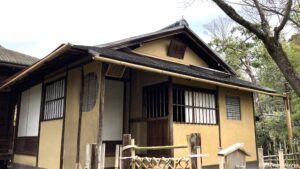Osaka Castle History: An unsurpassed Samurai Hideyoshi’s ambition to become a ruler of Japan
Osaka Castle was built by Toyotomi Hideyoshi. Along with the castle, its castle town, known as a "Water City," was also constructed. Unfortunately, the castle was burnt down during the Siege of Osaka in 1615 after Hideyoshi's death. Despite the destruction, the castle town demonstrated its logistical capabilities and played an important role as an economic city known as the "Kitchen of the Nation" for 300 years until the end of the Edo period (1603-1868). What was Hideyoshi's vision behind the construction of Osaka Castle and its city? Let's explore its story.
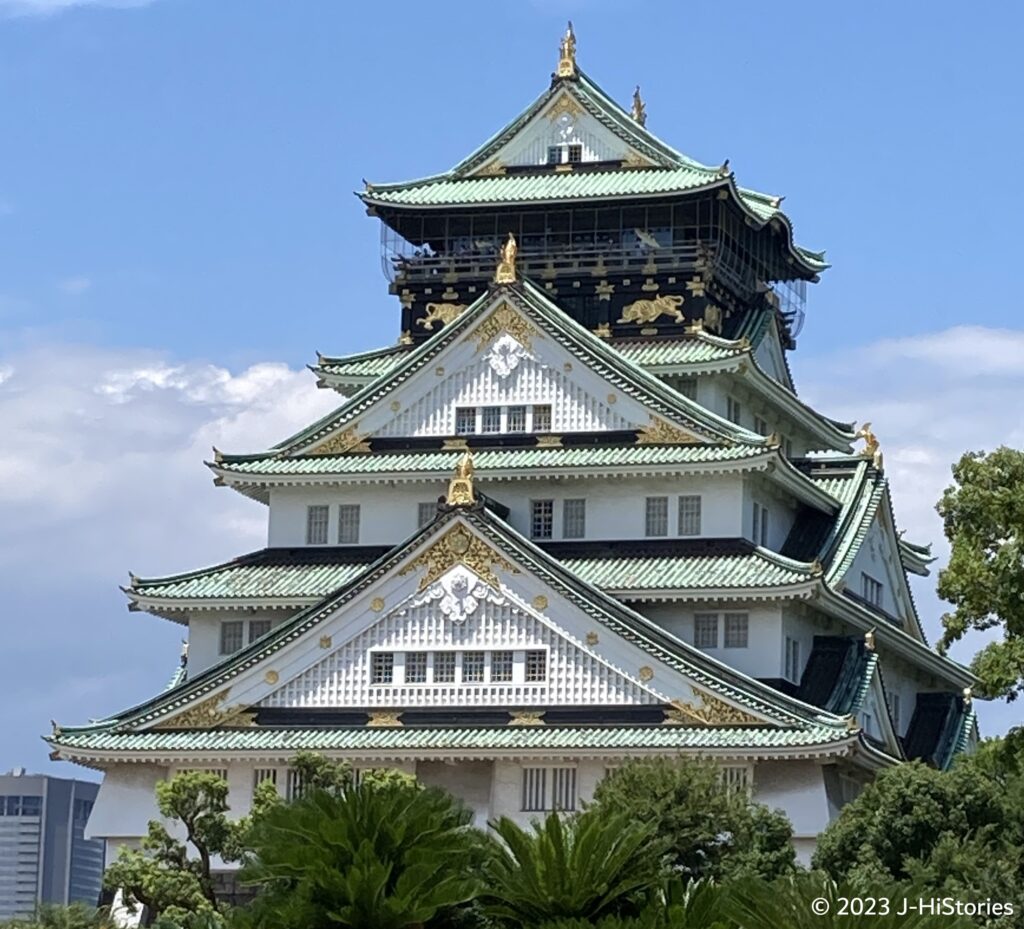
Oda Nobunaga, whom Hideyoshi served, died
In the Medieval period (15 - 16th century), Toyotomi Hideyoshi (1536-1598; 豊臣秀吉) began his service as a vassal to a rapidly growing military lord, Oda Nobunaga (1534-1582; 織田信長). Nobunaga defeated and subjugated his rival warlords one by one to end the Warring States Period with his military power, intelligence, and wealth. However, in 1582, the Honnoji incident occurred and he was killed by his vassal, Akechi Mitsuhide, just before the unification of Japan.
Hideyoshi defeated Mitsuhide, the murderer of his lord
Upon hearing about the deaths of Nobunaga and his son Nobutada, Hideyoshi rushed back to Kyoto from Okayama, where he had been fighting against the Mori clan for 10 days and over 200 km, spurring his horse day and night. He then defeated Mitsuhide at Yamazaki, southeast of Kyoto. Meanwhile, Nobunaga's chief retainer, Shibata Katsuie, also returned swiftly to his Kitanosho Castle in Fukui prefecture, covering a distance of approximately 170 km from Etchu, where he had been fighting against the Uesugi clan. His marching speed was faster than that of Hideyoshi, but he was unable to reach Kyoto and defeat Mitsuhide because the main Hokkokukaido road was blocked by Mitsuhide before the incident. This allowed Hideyoshi to take the first step in his plan to become Nobunaga's successor, as he achieved the feat of defeating the murderer of his lord.
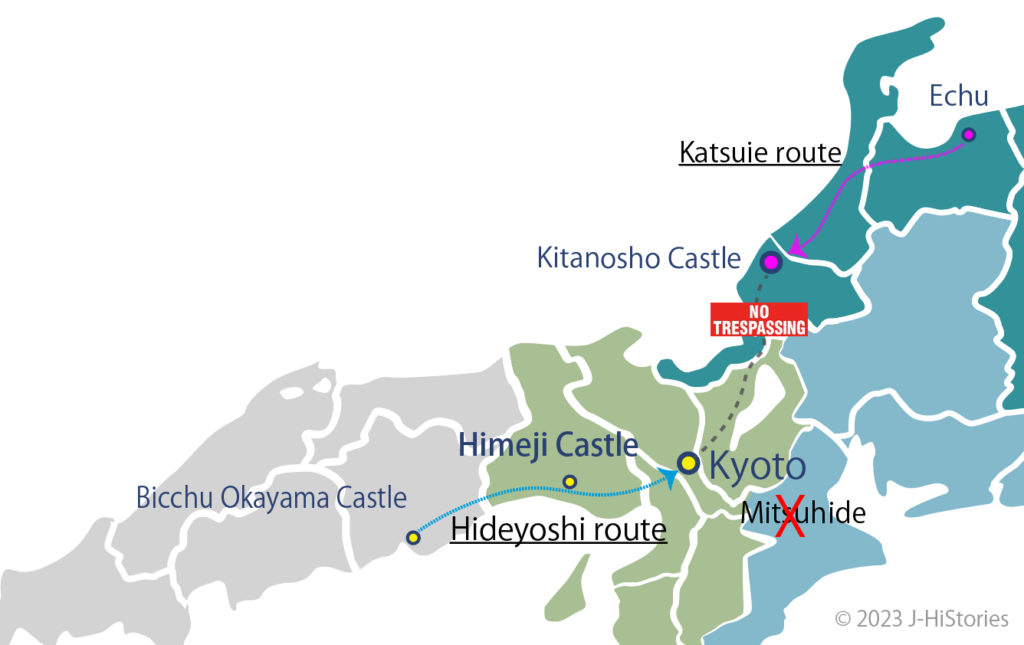
The positions of Katsuie and Hideyoshi were reversed at the Kiyosu Conference
Following the unexpected deaths of Nobunaga and his son Nobutada, a conference was held at Kiyosu Castle to determine the succession of Nobunaga and the redistribution of territory. Hideyoshi advocated for Hidenobu, Nobunaga's legitimate grandson who was only three years old, over Katsuie's preferred choice, Nobutaka, Nobunaga's third son. Hidenobu was eventually selected as the head of the Oda family, granting Hideyoshi initial control over the family due to his ability to manipulate the young Hidenobu. In addition, Hideyoshi's territory was expanded, including the capital city of Kyoto, and reversed the power dynamic between Katsuie and Hideyoshi. In 1583, just nine months after the Kiyosu Conference, Hideyoshi defeated Katsuie at the Battle of Shizugatake. It is believed that Hideyoshi's ambition was not solely to succeed Nobunaga, but to achieve the same level of power and influence as Nobunaga as the ruler of the nation.
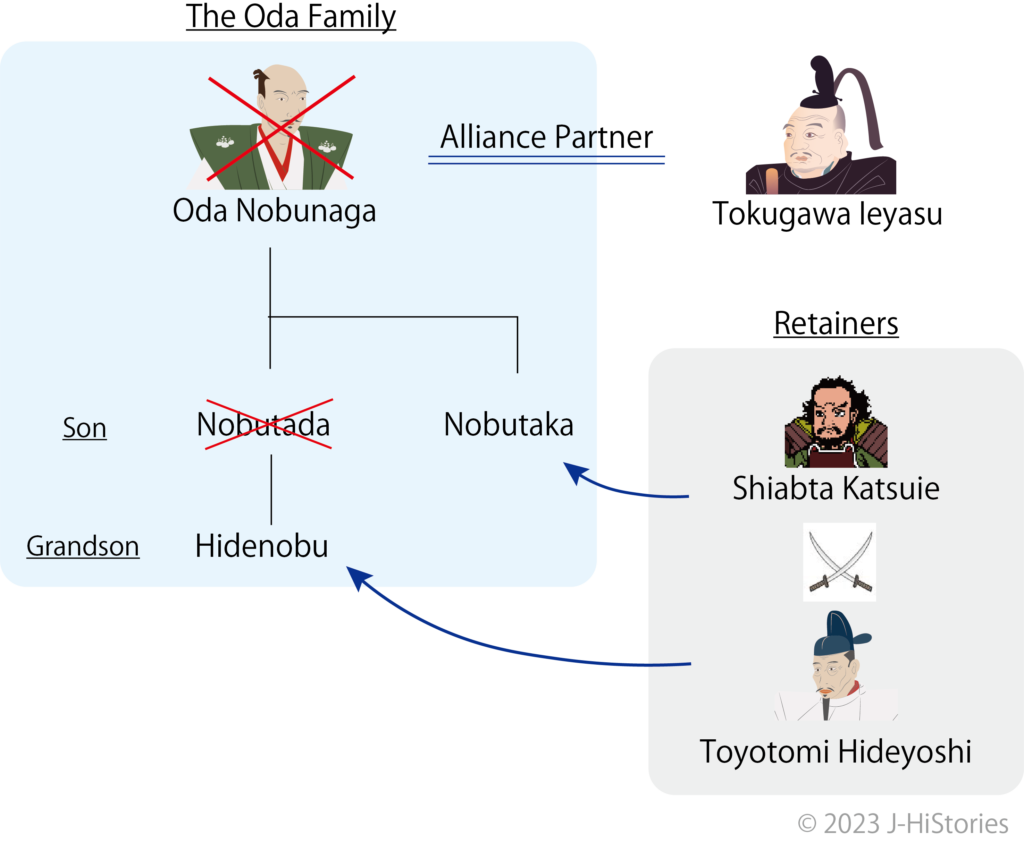
Osaka Castle, a center of the nation ruled by Hideyoshi
In 1583, Hideyoshi began constructing Osaka Castle on the Uemachi plateau. This location was strategically important as a transportation center for the logistical water network and was close to Kyoto, where the emperor resided, through the Yodo River. It was also connected to the western region by the Seto Inland Sea, where there were still warlords who were not under Hideyoshi's control. The central castle tower was completed in 1585, and it was said to be a symbol of Hideyoshi's power, with its large five-story keep adorned with gold leaf tiles and golden orcas on the roof. It had a huge reception hall with 1,000 tatami mats inside.
The castle also provided an impregnable defense surrounding the entire castle town with a moat, stone walls, and natural rivers. The castle town was built on the west side of Osaka Castle, facing Osaka Bay, and four major canals were constructed to provide a distribution network for water transportation. The streets were laid out in an orderly grid pattern, and roads were constructed. At the same time, an epoch-making urban development was achieved with the creation of sewers. Hideyoshi also created shipping docks and invited merchants to come to Osaka, thereby revitalizing the city's economy. As a man of the nation, Hideyoshi built a political and economic center on the Uemachi Plateau, accomplishing what his lord Nobunaga had failed to do. This plateau was the site that Nobunaga, Hideyoshi's lord, had been eager to seize even if it took a decade-long battle against Osaka Honganji Temple.
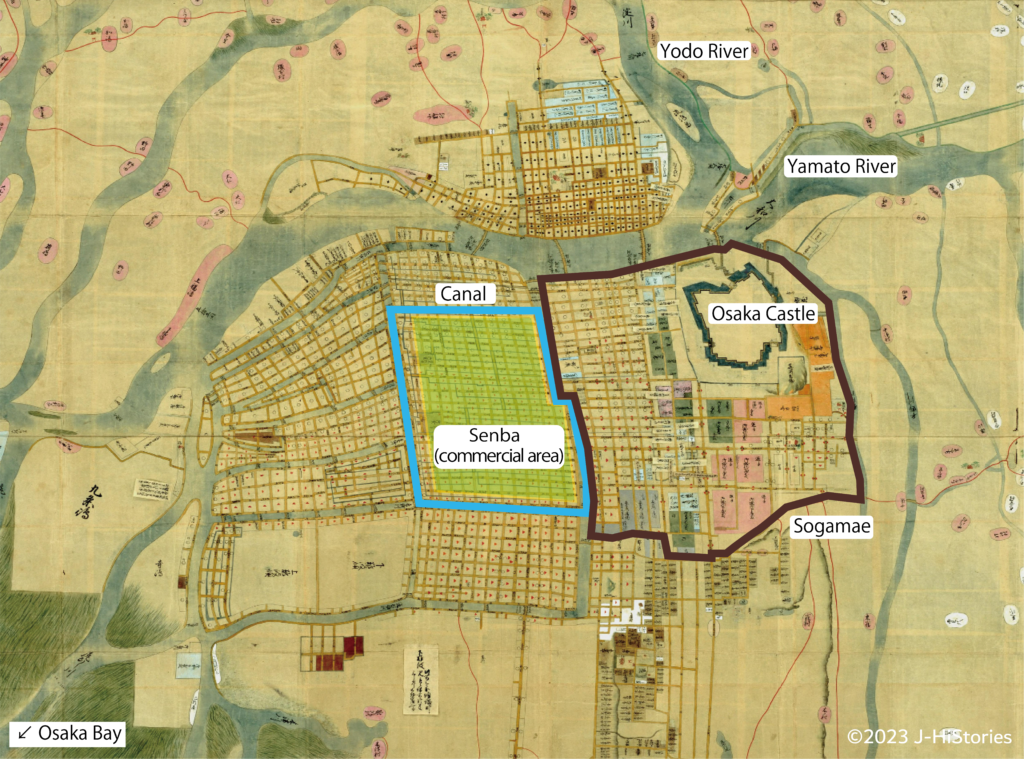
『大阪町中並村々絵図』,写. 国立国会図書館デジタルコレクションを加工作成
Hideyoshi rose to become the ruler of Japan
Through his skillful tactics and negotiations, Hideyoshi began his path to becoming the ruler of Japan. He carefully subdued or persuaded Nobunaga's retainers, brothers, and sons. It was easy for Hideyoshi to defeat them by arms but that meant the murder of his lord like Mitsuhide. Therefore, he did not rush but proceeded gradually and steadily, ultimately reversing the master-servant relationship with the Oda family. At the same time, he continued with the construction of Osaka Castle and its town. Standing in his way was Nobunaga's partner, Tokugawa Ieyasu (1542-1616, 徳川家康). The following year after the construction of Osaka Castle began, they battled at Komaki and Nagakute. However, the fight ended inconclusively, and they agreed to peace. In 1585, Hideyoshi became the first-ever Kanpaku*, remaining a Samurai, rather than becoming Shogun (the head of all samurai). This made him supreme over the Oda family, Ieyasu, and all the samurai.
* Kanpaku is a chief advisor to the emperor who governs in the emperor's stead.
The end of Hideyoshi
In March 1598, after holding a cherry blossom viewing party at Daigoji Temple, Hideyoshi's health began to deteriorate. By May, his condition had worsened, and he passed away on August 18 at the age of 61. His farewell poem read:
"露と落ち 露と消えにし我が身かな 浪速のことは 夢のまた夢",
meaning “I was born in this world like a dewdrop, and now I am disappearing like a dewdrop. Even though I am a man of the world, what I have created in Osaka is nothing but a fleeting dream within a dream.”
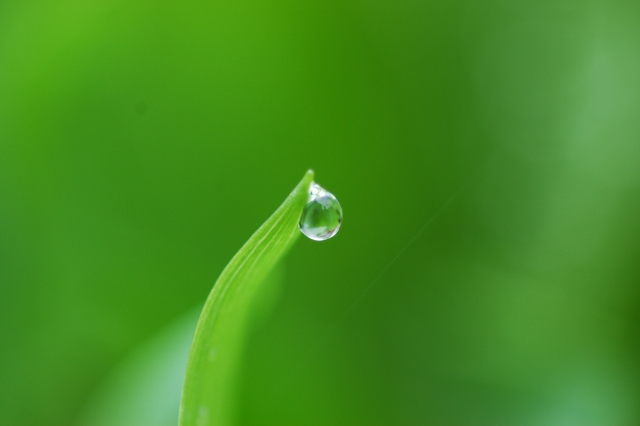
Hideyoshi was an unparalleled Samurai who rose from humble beginnings as a farmer to become a great unifier of Japan. Visitors can now enjoy exploring Osaka Castle and Hideyoshi's castle ruins, with the excavation of the stone wall currently underway. The public facility is set to be completed in 2024.
Toyotomi Hideyoshi Timeline
| 1537 | Hideyoshi was born in Nagoya | Age=1 | Azuchi Momoyama Period |
| 1554 | Hideyoshi started to work under Nobunaga | 16 | |
| 1582 | Shibata Katsuie fought against Uesugi clan in Echu province | 45 | |
| 1582 | Nobunaga was killed at Honnoji by Akechi Mitsuhide | 45 | |
| 1582 | Hideyoshi defeated Akechi Mitsuhide | 45 | |
| 1582 | The Kiyosu Conference was held | 45 | |
| 1583 | Hideyoshi defeated Sibata Katsuie | 46 | |
| 1583 | Hideyoshi started to build Osaka castle | 49 | |
| 1584 | The battle of Komaki Nagakute between Hideyoshi and Ieyasu | 50 | |
| 1585 | Hideyoshi was appointed to Kanpaku | 51 | |
| 1590 | Hideyoshi unified the nation | 53 | |
| 1598 | Hideyoshi enjoyed the cherry blossom viewing at Daigoji Temple | 61 | |
| 1598 | Hideyoshi passed away | 61 | |
| 1603 | Ieyasu estabished Tokugawa Shogunate at Edo | - | Edo |
| 1614 | The Winter Siege of Osaka | - | |
| 1615 | The Summer Siege of Osaka and Toyotomi clan fell | - |
Recommendations to visit
- Access: 10 minutes from JR Osaka Station on JR Osaka Loop Line (outbound) to Osakajo-koen Station (大阪城公園), then an 18-minute walk.

_169sakai-city-300x169.jpg)
